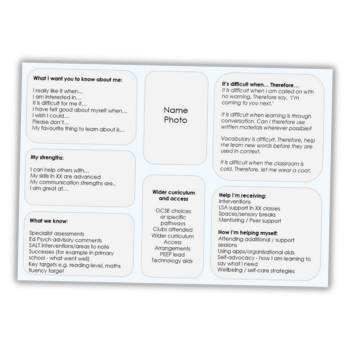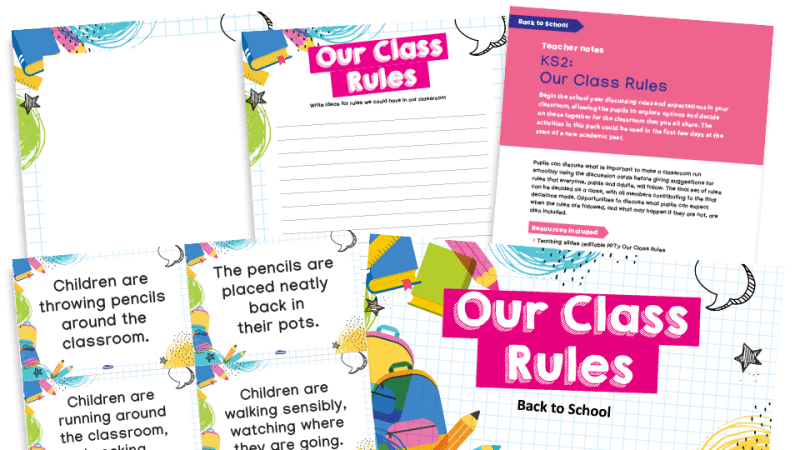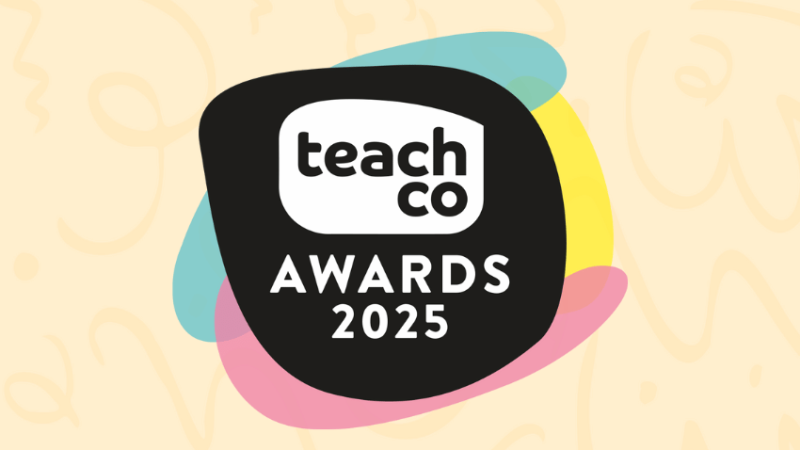Teacher recruitment – What’s causing the crisis & what’s the solution?

We explore the growing teacher recruitment crisis and possible solutions to help schools attract and retain the educators our students deserve…

- by Teachwire
- Classroom expertise and free resources for teachers

The challenges surrounding teacher recruitment and retention remain a frequent topic of debate across the profession.
Each year, education data specialist SchoolDash, in partnership with the Gatsby Foundation and Teacher Tapp, produces a review of recruitment trends across the country’s schools.
So, how are things going for secondary schools on that front in 2025? Well, it’s a mixed picture. Compared to 2024, there’s been a 31% drop in teacher recruitment across secondary schools and colleges in England.
However, we should note that this followed three consecutive years of higher-than-usual recruitment activity. That said, the review also points out that school enrolments remain squeezed. Schools remain just as exposed to less than ideal labour market conditions as any other sector, resulting in more cautious recruitment decisions across the board.
Indeed, 45% of secondary headteachers are expecting to reduce their teacher headcount as of next September.
Levelling off
Beyond that, the review’s authors observe that fewer teachers seem to be changing jobs, after a spike in turnover following the pandemic.
Headteacher turnover rates are similarly down across both primary and secondary. In fact, they’re now at, or even slightly below those pre-pandemic. However, just 42% of deputy and assistant headteachers currently aspire to become headteachers themselves.
Subject analysis
The review also charts the changing picture over time of teacher recruitment according to subject. Based on an analysis of job advert placings, the review’s authors conclude that since 2018/19, the smallest declines in recruitment can be seen in arts (-8%), humanities (-16%) and technology (-17%) subjects.
Conversely, the most marked declines have been in English (-32%), maths (-28%) and science (28%). However, with these core subjects seeing the most dramatic rises in recruitment between 2020 and 2025, it’s perhaps understandable if these figures seem especially pronounced.
Regional variations
Perhaps to no one’s great surprise, London and the South East both continue to see the most recruitment activity compared to other regions. New recruits predominantly join schools with higher proportions of disadvantaged students.
An important caveat to all this, though, is that this year’s SchoolDash review has been published slightly earlier than usual. This makes it harder to draw direct-on-year comparisons. It’s something the report authors plan to correct with an update to the figures.
What is causing the teacher recruitment crisis?
Some oft-cited reasons for the ongoing recruitment and retention crisis include:
- unruly behaviour
- unmanageable (and growing) workloads
- funding shortfalls
- rising rates of SEND, with teachers new to the profession feeling ill-equipped to deal with the wide-ranging needs of the learners in their care
Which subjects are struggling?
Despite some generous tax-free DfE bursaries for certain ‘shortage subjects’, all secondary subjects bar three under-recruited in 2023/24.
Physics achieved just 17% of its target – despite boasting a £28,000 bursary – while business studies (with no attached bursary at all) achieving only 16% of the target set.
How one training provider is tackling the issue
The Tommy Flowers SCITT, a school-centred initial teacher training provider located in the heart of Milton Keynes, is seeking to tackle the teacher recruitment crisis through a variety of initiatives.
The fact that 92% of its trainees remain in the profession beyond five years indicates that its having some success…
Financial support
Perhaps the most striking recruitment challenge we’re seeing is the lack of financial support. Amid the ongoing cost of living crisis it’s been increasingly difficult to recruit in PE, history and business, none of which offer any bursary incentives.
We’re aware of many previous trainees specialising in these subjects who have had to hold down part-time jobs alongside their full-time ITT studies.
At the same time, the 2024/25 recruitment cycle saw the English bursary slashed from £15,000 to £10,000 – which seems surprising, considering that English recruitment for 2023/24 was around a quarter below target.
Consequently, we’ve gone from having a strong cohort of English trainees in 2023/24 to being unable to recruit a single English trainee for this academic year.
To combat this crisis, we’ve taken the decision to offer £3,000 bursaries ourselves for all non-bursary subjects throughout the 2025/26 recruitment cycle.
“We’ve taken the decision to offer £3,000 bursaries ourselves for all non-bursary subjects”
This will provide incomes of £300 a month across our 10-month training courses, to help support our trainees with everyday expenses such as transport and the purchasing of resources.
Though a modest amount, this £3,000 may at least mean that these trainees need no longer secure part-time employment during their training, thus improving their work-life balance and wellbeing.
As a SCITT, we also have access to four flats that we offer out to trainee teachers and ECTs who are new to the area.
The flats are provided at reduced rents to give these teachers time to settle into the area and save some money during those early years, when incomes can feel particularly tight.
SEND training
Another key recruitment and retention challenge is the aforementioned increase in the number of students with SEND.
In light of the many varied and growing needs across the Milton Keynes education landscape, we ensure that trainees undertake an extensive training programme throughout the course on how to adapt their teaching to meet the needs of all the learners within their care.
To guarantee that trainees are able to develop into confident ECTs, we’ll provide them with access to local expertise and training that spans a diverse array of areas, including adaptive teaching strategies, literacy, ASC and dyslexia.
We also work regularly with SEND specialist Anita Devi, who facilitates sessions that prepare our trainees to plan and deliver presentations on specific areas of SEND to their peers.
Moreover, we’ve just introduced an Adaptive Teaching Intensive Training and Practice week, during which trainees will be able to work with local experts to hone their skills in low-stakes settings and environments.
Having these opportunities to plan, rehearse and receive feedback on strategies that they’ve trialled helps to ensure that ECTs can develop the necessary experience to support students with SEND before putting what they’ve learned into ‘live’ practice with a real class.
Sally Newton is secondary partnership manager at the Tommy Flowers SCITT provider of primary and secondary PGCE and apprenticeship courses.
3 steps to getting more people (and then keeping them)
How can we attract more people into the profession – and then ensure they want to stay? Emma Hollis from NASBTT puts forward her suggestions…
1. Make ITT more affordable
Teacher pay tends to get the most attention, but it’s not the only problem. All ITT candidates must be able to afford the cost of training in the first place. This is an issue that’s already had a critical impact on the talent pipeline and diversity of applicants.
Possible solutions could include reducing tuition fees for all trainees (through government subsidies for ITT, rather than providers being paid less for the programme).
Trending
We could also explore the potential for fee grants during the training year and the introduction of bursaries for all. The latter could prove to be a particularly effective driver for persuading people to enter teaching – especially in high-priority subjects.
At the same time, however, these aren’t levered regionally. Schools that fall into opportunity areas, for example, aren’t necessarily those areas where we see the most teacher shortages. We sorely need a more nuanced approach in terms of both region and subject.
“We sorely need a more nuanced approach in terms of both region and subject”
We’re currently working with partners on modelling the impact and potential benefits of awarding new teachers student loan reimbursements after they’ve worked in state schools for a certain number of years, and will report the findings later this year.
2. Embrace flexible working
We also need to close the gap between existing approaches to flexible working and growing demands for more innovative approaches.
In a recent NASBTT survey, 89% of ITT providers told us that greater opportunities for flexible working would attract more applicants to the sector. It’s also widely known to be an important factor in retention. By focusing our efforts on retention – perhaps even over recruitment, at least for now – we could reduce the need to recruit so many new teachers going forward.
Alongside the team behind the Flexible Working in Multi-Academy Trusts and Schools (FWAMS) project, we’ve develop guidance aimed at helping the ITT sector implement flexi-working as a starting point.
Many organisations now embrace opportunities to work more flexibly, but there remain obvious barriers to schools replicating similar practice. It’s vital, however, that the sector feels empowered and confident in pursuing bold, ambitious plans for flexible working environments.
3. Tackle public perceptions
At the heart of all this is a discussion on what we want schools to be and do Following the closure of other key services, teachers’ roles increasingly entail supporting a much wider range of health and social care issues.
We know why some people want to become teachers – but we must also understand what discourages young people from considering careers in teaching, and use those insights to inform the next steps we take.
One such step could be for the DfE to commission research into precisely which undergraduates aren’t choosing teaching as a career option and why, instead of basing their research activities around examining those who do.
Emma Hollis is Chief Executive of the National Association of School-Based Teacher Trainers; for more information, visit nasbtt.org.uk.
Should we be looking to late career changers?
If the same teacher recruitment well keeps running dry, asks Melissa Benn, why not try enlarging the pool of potential candidates?
Recently I had the pleasure of interviewing Lucy Kellaway about teacher recruitment. The former Financial Times columnist left journalism in her 50s to embark on an entirely new career as a classroom teacher.
What’s interesting about Kellaway is that she not only swapped one profession for another, but also set up an organisation called Now Teach to help others make the same journey.
Intense pressure
Kellaway has frequently written about her experiences of working in state education for her old newspaper. She used a series of FT columns to examine some of the key issues affecting state education. This included unsustainable workloads.
I spoke to her soon after the publication of a DfE report on that very topic. The department’s ‘Working Lives of Teachers and Leaders’ study is long and detailed, but we can summarise its findings as, ‘Teachers and leaders are under great pressure.’
A separate study published in April 2024 by the NEU, ‘State of education: workload and wellbeing’ similarly found that many in education are facing ‘unmanageable’ workloads.
This is hardly a new problem, of course. Though it’s striking to look back over the past decade and see just how little has changed. That’s despite repeated efforts by both government and unions to reform working cultures.
Kellaway’s experience provides an interesting frame through which to consider various issues raised in both reports. The first of these is simply financial. By the time she entered teaching, Kellaway had already paid off her mortgage and her children had left home.
“By the time she entered teaching, Kellaway had already paid off her mortgage and her children had left home “
Observing her younger colleagues, she’s seen the intense pressure they’re under. They’re trying to meet the financial demands of setting up homes and raising families on middling salaries that haven’t kept pace with inflation.
The lesson to be learnt here? That teaching simply doesn’t pay enough for what it demands.
Enforcing limits
Kellaway’s second key observation is that, to put it crudely, she had already met and satisfied certain ‘status’ ambitions well before she entered the teaching profession. Having been a national newspaper columnist for the past 30 years, by that point she had nothing left to prove.
Instead, she became increasingly motivated by her writing job feeling empty. This was compared to the value she saw in improving the next generation’s life chances.
Now aged 63, Kellaway has also come to understand and increasingly enforce her own limits. This has enabled her to keep the job both sustainable and highly enjoyable.
“I absolutely love being in the classroom,” she says. “What could be (better) than spending your life with teenagers? They’re funny, and by definition, optimistic, because they’re at the beginning of their lives?”
“What could be (better) than spending your life with teenagers?”
Again, however, she is acutely aware of how her younger colleagues lack such freedom of choice with respect to their careers. They have to contend with working days of 12 hours if they want to earn more or rise up the ladder.
Teacher recruitment talent pool
The takeaway is perhaps that when it comes to teacher recruitment, we need to create a larger pool of experienced classroom teachers. And we need to properly pay and genuinely value them for their talent and experience.
At the same time, however, we also need to create the conditions that will allow them concentrate on their jobs. They shouldn’t have to take on additional administrative stress.
Finally, Kellaway highlights how the drive to get top marks and secure a place at a top university can create incredible stress. This is not just for young people, but teachers and school leaders too.
Having worked in both hyper-ambitious schools with high staff turnovers, and more relaxed settings where greater emphasis is placed on cultivating good relationships, she’s seen first-hand the great value of the latter.
It’s still difficult to question the relentless prioritising of achievement within contemporary state education. It may be that the issues faced by today’s overworked teachers can be traced back to a broader excessive emphasis on individual achievement across wider society – and not enough on the importance of social equity or harmony.
Melissa Benn (@Melissa_Benn) is the author of Life Lessons: The Case for a National Education Service, and is a Visiting Professor at York St John University.










